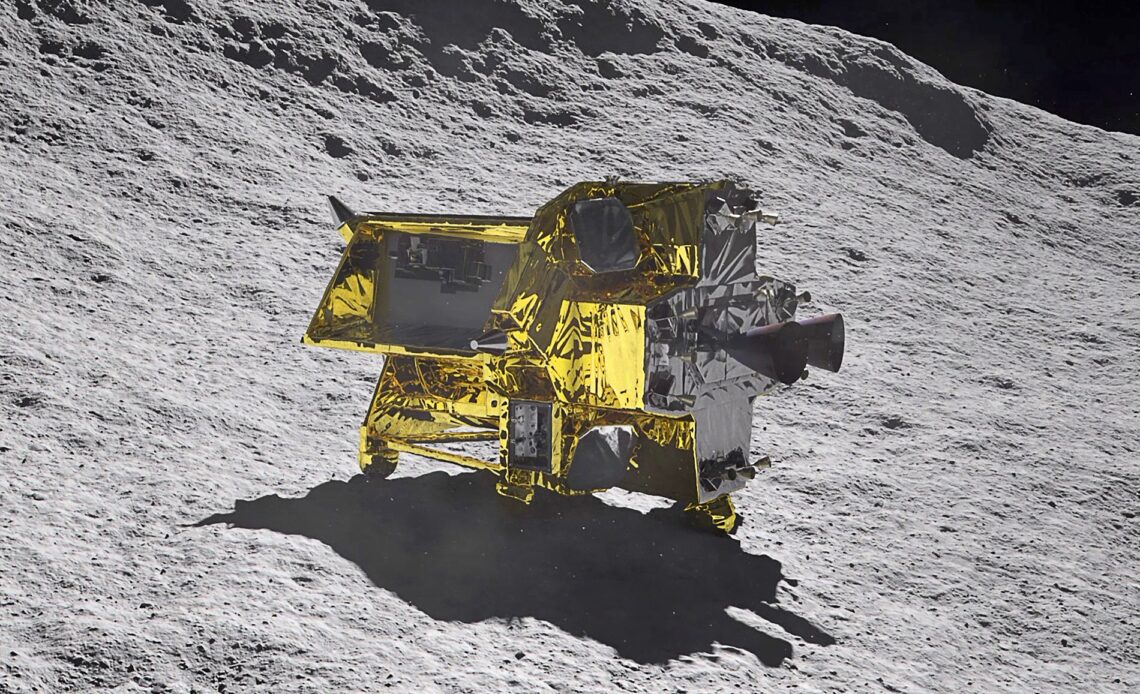A Japanese spacecraft has soft-landed on the moon, making Japan only the fifth nation in history to achieve the feat.
Called Smart Lander for Investigating Moon, or SLIM, the car-sized robotic lander successfully touched down near the Shioli Crater at the moon’s equator at 10:20 A.M. EST on January 19 (12:20 A.M. local time on January 20 in Japan). The mission was developed and launched by the Japan Aerospace Exploration Agency (JAXA).
“We have been able to confirm it has arrived on the lunar surface,” said Hiroshi Yamakawa, the administrator of JAXA, during a postlanding press conference. Whether SLIM has met its goal of a precision landing in a 100-meter target site remains unknown, however, because of unexpected complications that jeopardize the mission itself.
At the press conference, JAXA officials revealed that although SLIM is in contact with mission controllers and accurately responding to commands, the lander’s solar panels are not generating power, and much of the gathered data onboard the spacecraft have yet to be returned to Earth. The mission is consequently operating on batteries, which have the capacity to power its operations for several hours. After SLIM drains its batteries, its operations will cease—but the spacecraft may reawaken if its solar power supply can be restored. JAXA’s plan had been for SLIM to operate on solar power for about a month after landing. Mission controllers have turned off a heater on the spacecraft to minimize its power consumption—in hopes of maximizing its lunar-surface operations and thus its scientific returns.
The stationary lander carries an onboard multiband camera to study its surroundings. In particular, JAXA scientists are eager to observe the nearby Mare Nectaris (“Sea of Nectar”) on the slope of Shioli, which is thought to be an exposed area of the lunar mantle that bears a greenish mineral called olivine. “From orbit we’ve detected olivine in this region,” says Gordon Osinski of Western University in Ontario. “It’s a holy grail to sample the moon’s mantle”—something SLIM will not do directly.
Initially launched in September 2023, SLIM took nearly four months to slowly reach the moon’s vicinity and finally entering lunar orbit on December 25, 2023. It then spent three weeks gradually lowering its orbit, down to just 15 kilometers in altitude, before beginning its landing attempt on January 19. It is the second Japanese spacecraft to attempt a landing on the moon. The…
Click Here to Read the Full Original Article at Scientific American Content: Global…

